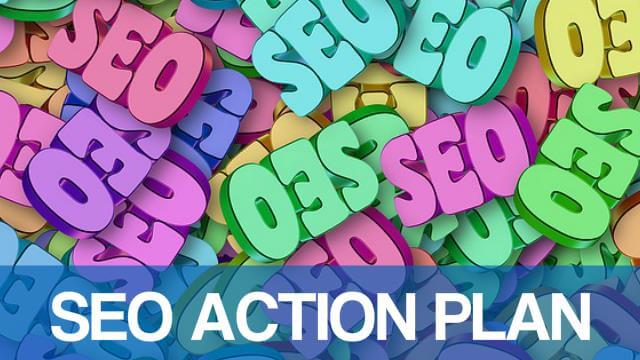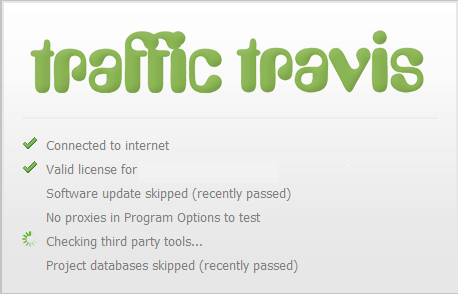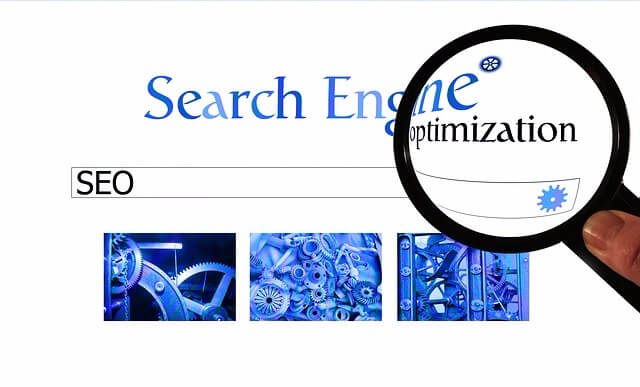 Are you a Litchfield Park business owner who is trying to save a few bucks by handling your own website search engine optimization?
Are you a Litchfield Park business owner who is trying to save a few bucks by handling your own website search engine optimization?
Here’s a free SEO action plan to get you started on the right path to boost your search ranking.
In this Free 17 step guide, you’ll learn the SEO framework I use to get ranked on Google, Bing, and Yahoo.
So whether you’re doing search engine optimization in Litchfield Park AZ, Goodyear AZ or anywhere else, you can follow the same process I use.
Now:
You’re probably wondering why I’m giving away my secret sauce, right?
The truth is, once you see the step by step SEO plan, chances are you’ll realize it isn’t as easy as you thought.
And then you’ll let me handle it for you!
Let’s get to the plan…
SEO Action Plan (Step by Step Guide)
Here’s what you’ll learn in my SEO plan:
- Research and Analysis
- Implementation
- More Analysis and Adjusting
SEO Plan Of Action Phase I: Perform Research and Analysis
5 Common SEO Mistakes
1. Strategy development – this is where you need to start. A good planned out strategy is the key to ranking.
2. Target term research – next you need to research which keywords and phrases customers use to search for products and services like yours.
3. Search for related keywords – also know as LSI keywords (Latent Semantic Indexing), this helps a search engine understand your content.
4. Establish baseline performance for search terms in all major search engines – this will need setting up analytic account on Google.
5. Assess link popularity and page saturation – this requires not only looking at your own website but also your competition. What are they targeting?
Analyze link popularity to decide how many of your site’s pages are indexed in search engines and how many other sites link to the site.
6. Assess search engine-friendliness of a site – Google loves speed and good navigation. Is your website slow and hard to navigate?
Speed and navigation help crawlers from search engines such as Google and Yahoo move quickly through your website. The faster crawlers move, the better the chance of getting all your pages indexed.
7. Review recent site traffic statistics – analytic data help you understand what visitors are finding and how long they are staying on your pages.
How often are you reviewing site statistics/logs to help assess how visitors access your website?
Without doing any research or analyzing any data you are just drifting. A good strategy means your website is targeting a direction or group of users.
If you want shoppers to find your Goodyear Law Office, or Litchfield Park Dental Office or Avondale Real Estate Business, then you will need to focus your website on relevant keywords and phrases.
SEO Plan Phase II: Implement (Test Different Strategies)
Google Site Verification
8. Identify target pages for optimization – after you’ve completed your research, you should know which pages are getting the most traffic, or at least showing up in Google search analytic data.
The plan here is to seamlessly integrate your target keywords into your site’s pages so that visitor finds relevance in your copy.
For example, if you are looking for a SEO in Avondale AZ and you see phrasing relating to Avondale CA, you know this isn’t what you want, right?
9. Optimize page copy – use keywords to help with relevance but do not overdo it. This is known as keyword stuffing and search engines, especially Google will penalize your website if they feel you are over optimizing your content with the same keywords or phrases (Use LSI keywords to balance the copy).
The trick is to edit page copy to sounds like spoken English, not a college essay.
10. Linking strategy (internal and external) – this is a touchy topic and I can only say to walk carefully here.
Review internal linking structure to find opportunities for inserting key terms to be used as anchor text leading to other pages on your website. This also helps search engines crawl your site’s pages.
The best way to get external links is to post shareable content that other bloggers link to. Lists are great for getting links since many bloggers don’t have time to make their own list post, so they will link to related lists to help with their own SEO.
For example, a list post of handy tips to help sell real estate in Glendale AZ will draw attention and links from other related blogs with similar content.
11. Page formatting and applying header tags – this is also known as on-page SEO and is where I spend a lot of time and effort.
Using header tags (e.g. H1, H2) with an interesting tagline for headings and subheadings will help make sure that keywords receive SEO juice.
12. Format page titles and meta tags – more on page SEO.
Make sure that the titles of the optimized pages are strategically created to integrate keywords and that they appeal to visitors.
The proper formatting of meta titles, keywords, and description tags ensures that key terms show up on the search engine results page (SERP).
13. Manually submit pages to targeted search engines and/or directories – don’t rely on chance to get your pages crawled by spiders.
Your site pages may already be indexed in major search engines, such as Google, Yahoo Search, and Bing. However, if they aren’t, then there are ways for submitting your site
to these engines manually. Here are links to Google Search Console and Bing Webmaster Tools.
It can take weeks or months before your pages are indexed, which is why a search engine-friendly linking structure is important. But the benefit is once crawlers start finding your pages then any new pages you add should automatically be found by the search engines.
Here’s a good video to show you more about Google webmaster tools…
Creating an SEO Strategy
14. Other linking strategies – do not buy links!
Here are a few more tips for building links:
- Join forums and reply to questions
- Post videos on YouTube
- Do guest posting
- Post comments on blogs
SEO Plan Phase III: Analysis (Keep Improving)
15. Search Engine Monitoring – Once you’ve taken care of basics it’s just a matter of continuing to check and make tweaks here and there.
Following the Phase II implementation process, you will need to monitor the data collected by search engines. When you see an opportunities to make improvements show up on webmaster tools or analytic data, make a tweak.
For example, in Google Search Console you might see the keywords you are targeting finally start to get search impressions. Once this happens, you can focus attention on helping these terms get a better ranking by adding more content with these terms or building internal or external links with the same or LSI terms as the anchor text. Careful though, because this is tricky and can cause more problems than it’s worth!
16. Post-optimization reporting – learn to use webmaster tools and other analytic tools for creating reports.
Once optimized pages have been properly indexed by the search engines, a post-optimization report that shows your progress is needed.
17. Analysis of progress – SEO is ongoing…
After evaluating your new search engine positioning for your money terms, you’ll want to continue to check progress and make tweaks to your website as required until your website generates traffic from Google and Bing for keywords that drive sales. Sounds easy, right?
This all begins with site verification…watch this video for help.
What’s next?
After you’ve taken care of the basics then it’s time to build your first SEO-Focused content calendar.
Hi, my name is Avery Bingham and I’m the web copy chief at iProv. I’m here to tell you all about how to create the perfect SEO focused calendar. Before you even start to make your calendar it’s important to know what SEO really means. It means search engine optimization so what that really translates to as far as your calendar goes is we want to choose keywords that really relate to you, your services, and your audience. And then build a whole calendar around that. We do that by making either a three-month calendar that’s our protocol you can make a two-month calendar or a woodland calendar. But we like to plan things in advance and what you put on those calendars is content that you want to put on your website. It could be on your blog. It could be a landing page. It could be whatever you want and infographic whatever your audience is going to respond to but the key is you want to keep your message consistent to where your audience knows this is coming from you and it’s applicable to them.
The first step to making your calendar is deciding what are your keywords going to be and that’s going to involve research it’ll involve looking on you could look on Google Analytics we look at a ton of different outlets. Some of it’s paid. Some of it is free. But for our clients, we really roll it out. We make sure we have the best keywords for you. If you’re just starting out with content just look at the most basic research tools. You can just google SEO research. Figure out what your keywords are. They should be applicable to you and to your audience. And then you want to start building out your calendar.
Then step two decide how you want to format it we like to do in an Excel spreadsheet so we have all of our little columns all of our rows and we go who’s the client? Who’s it for? so for you whatever your business is. This is just a calendar for you for our columns we put in keywords so we’ll say what are the keywords we want to use and we’ll say a type of content it could be a blog post, could be a landing page; it could be a newsletter. Whatever it is, we want that piece of content to have keywords associated with it so that as you’re building your headlines; as you’re really filling out the post, you’ll know what you want to put in there.
So you get from super specifics your keywords and you get a little bit broader as you fill out your content. You don’t have to use an Excel spreadsheet if you feel like that’s too complicated for you. You can use a printed out calendar as long as you know what kind of content you’re publishing at what time that’s going to get you on the track to building that snowball. Because as you produce this content at a regular interval search engines start saying hey! They keep mentioning the same things over and over again. People are viewing their things and they let see expert so they must know what they’re talking about so once you figure out how you want to build your calendar either Excel spreadsheet, on a whiteboard, on a word document; it doesn’t have to be fancy. You want to start brainstorming with your team about what your audience wants to hear so you have your keywords.
You know how you’re going to build your calendar but you don’t know exactly what you’re going to put in it yet. So brainstorm with a lot of different people sometimes you may have really good ideas. One month and then the next month you’re just begging for ideas so it’s awesome to brainstorm and get the whole team’s input. Once you execute your plan you have your blog post, your videos, whatever it is you want to be able to track so seeing it how long are they watching it; how long are they reading it – are they clicking on any of the other links on your website? That’s where analytics tracking comes in so this whole funnel of creating your calendar at the end of your calendar when you finally post your articles or your blog post.
Whatever it is you want to be able to track that so that’s the next part to how you’re going to see what else does my audience want to learn; what else can I put in future editorial calendars SEO focus, and can I change any of my keywords. Do I need to get a little bit more specific or do I need to get a little bit broader so not only are you creating an SEO focused calendar?
You’re also saying what can I do better for my next calendar – okay so I know that was a lot of stuff. We’ve got lots of steps to make that tiny snowball into a big snowball where you are suddenly the expert in your field and I know building that content may not be your forte and that’s okay because people like us and I proper here to create that content. Do the keyword research and get you to where you want to be so that you’re not spending time trying to optimize your website. Doing a kind of a crap way job and then ending up with mediocre results we want that snowball to be huge! It takes time and it takes planning but that’s what we’re here for you.
If this SEO plan of action sounds like work you want to handle yourself then the sooner you begin the sooner you’ll start to see results!
Did you find this useful? If so, I recommend reading SEO Services in the Litchfield Park (How Can SEO Help My Business?).



This is what i am looking for! I am a web dev and i don’t know much about SEO. I recently opened my own freelance agency and was hoping to get clients. I invested time and money from ads but loosing money so fast.
Implementing SEO really is gamechanger but not people are knowlegeable or even knows where to start. As a programmer, i tend to do things via a flow chart and this is like an SEO flow chart! This article really has great value. Thanks for sharing!
Thanks for sharing this article, This is what i am looking for…
great list for seo
Fantastic blog! Do you have any tips and hints for aspiring writers?
I’m hoping to start my own site soon but I’m a little lost on everything.
Would you advise starting with a free platform like WordPress or go for a paid option? There
are so many options out there that I’m totally overwhelmed ..
Any ideas? Many thanks!
Awesome post to convince client for seo services.
Great article.
Excellent post…
Great Content ! Looking forward to more info like this.